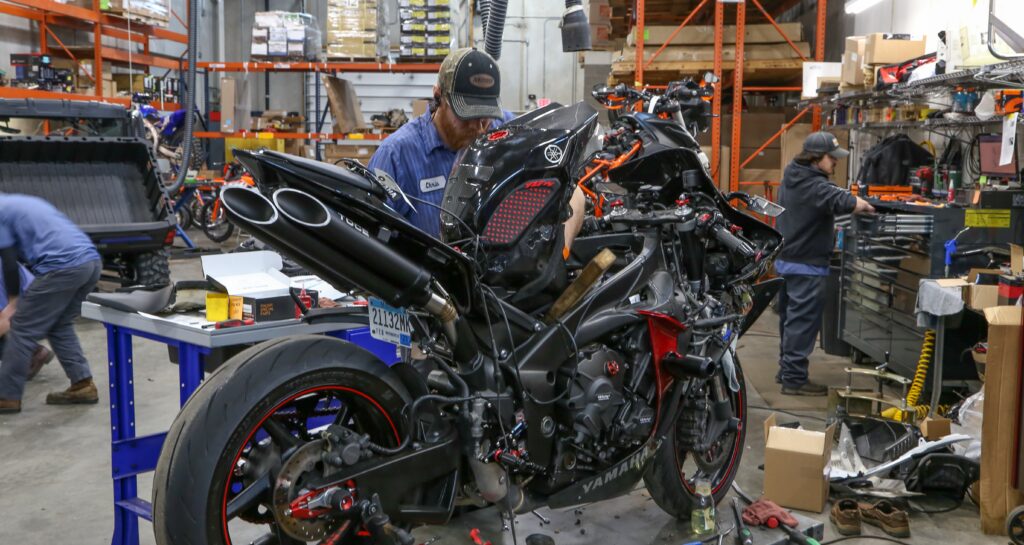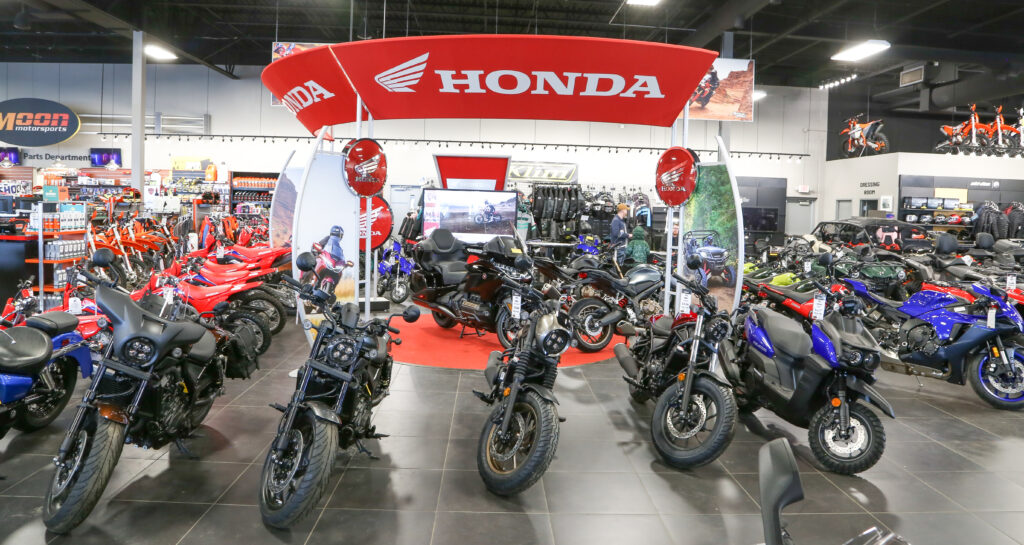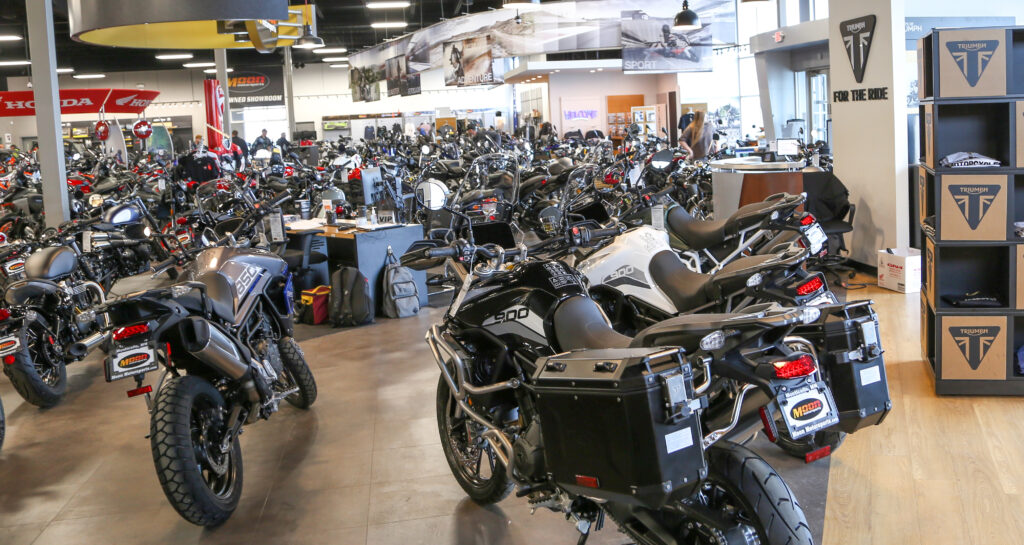Labor shortages continue post-pandemic
With the COVID−19 pandemic now downgraded to an endemic level, meaning the virus will be around for years to come, the post-pandemic business world is still in flux. There were more than 100 million cases and 1.1 million deaths in the U.S. alone during the pandemic. But the World Health Organization has assured us that the worst is over.
In the powersports industry, we had to grapple with being short-staffed or employees working from home, as the world suddenly had the time and money to spend on our products. It was only a short time before dealers were overwhelmed with new business, and returning riders entered the fray as supply chains were stretched to the maximum.
As we take a breath from surviving the past three years, we face new challenges. How will you keep all the new customers you gained, and can you top the sales numbers from the previous year?
What keeps dealers up at night ranges from writing big fat floor plan checks to wondering who’s going to show up to work the next day. But one thing is clear: there are growth opportunities when everything comes together. While it helps to have the inventory, you also need qualified staff to sell and service these units.

Aaron Littman, GM and majority owner of Sunrise Cycles in Norfolk, Virginia, says they’re seeing many more job applicants since the pandemic, which he notes is a “great thing.”
Like many dealers, Littman admits that COVID caught them off-guard, and they had to learn to pivot to the changing environment during the height of the pandemic. But things are finally returning to normal, and he says finding qualified employees is proving to be a challenge.
“Our hiring process is a little bit more indepth (than some other dealers),” Littman says. “I like to hire people who actually ride so they can better relate to our customers.” Littman adds that it’s not only crucial for new hires (especially in sales) to relate to customers, but they are looking for likeminded people to be part of the team.
“We want to ensure they mesh well with the store since we spend so much time with our co-workers. It’s important to have the right personalities that can work together.”
PSB columnist Mark Sheffield, wrote in a recent column (May 2022) that one of the difficulties with returning to normal is getting the sales staff back to selling, not just taking orders.
“Many sales associates haven’t had to sell anything in a long time. They (were) just taking orders,” Sheffield stated in his column from last year. “There’s no negotiation over price; it is what it is. Customers place a down payment and then don’t hear back from their salesperson for months. Dealerships are no longer conducting sales training. Customers aren’t being logged in to the CRM.

And, due to all the extra money they are making, many sales employees’ living standards have changed. When they have to go back to selling, and paychecks return to normal levels, there’s going to be a lot of stress and turnover.”
While some of these predictions have played out, others have not rung as true. The turnover has been less than expected, and dealerships are still seeing growth, even though unit sales have slowed down due to a combination of inflation and interest rate hikes to combat it.
Littman says Sunrise Cycles has been “fortunate and blessed” to have a good work culture, which he credits as part of the secret sauce to keeping employees for a long time. But generational shifts are starting to be a factor in some dealerships as older employees retire.
“A lot of our guys and girls have been longtime employees here,” he says, “but the challenge we’re having is that some are getting ready to retire. We’ve had difficulty finding that younger generation, my generation, to fill the footsteps of those leaving.” It’s incredibly challenging on the service side, according to dealers we surveyed, which showed that 62 percent of dealers were short-staffed in at least one department. The service department was identified as the most understaffed area, with 68 percent stating they were looking to hire techs.
Littman notes that it’s tough to find people that want to get their hands dirty, even though “there’s great money to be made.”
The technician shortage is very real in both powersports and automotive. Many dealers we contacted are worried about being able to fill open positions that have been that way for months. Most dealers who took part in our recent survey on hiring stated that the problem of finding qualified techs is significant. However, we will note that some dealers have been fortunate to hang on to their techs long-term. But there’s more to it than luck.
“I try to be proactive with keeping talent engaged with our dealership. I’m very big on training and making sure all of our staff stays up to date, whether it’s from the manufacturers, some online course that I think would benefit them, or anything going on locally or through our aftermarket partners,” Littman describes.

The techs at Sunrise Cycles must have their online certifications for all of their OEMs in the first six months, according to Littman, and then after that, the techs are sent to manufacturer training.
“I want all of my techs to be gold level within two to three years,” Littman explains. “I think it’s very important to the dealership because that builds trust with our customers in the community and justifies why our labor rates are slightly higher. The reason is that you’re getting the best in the area. We stay up to date by basically reinvesting into our team.”
Alix Del Toro, marketing manager of Moon Motorsports, credits their technician retention to a combination of factors, including career growth opportunities, product variety, and workplace culture.
“Along with the wealth of talent, there’s so many lines to work on,” Del Toro says. “There’s so much opportunity for each technician, and we’ve grown many into strong brand experts. They’re not susceptible to other opportunities outside of Moon Motorsports because there is so much internal opportunity. In the time I’ve been the marketing director, I haven’t had to invest any of my marketing budget into recruitment for service technicians.”
In powersports, it’s relatively common for employees (and techs) to bounce from one dealership to another within the geographical area. Del Toro says that he’s been approached by other stores, but it has yet to entice him to even think about leaving.
“Dealerships aren’t averse to reaching out to other dealership employees and giving them opportunities,” says Del Toro. “I know we get those opportunities, but it never crosses my mind to leave because it is such a unique dealership experience here.”
Del Toro says his dealership is like a work family; they enjoy spending time together, even outside work hours. Other dealers we spoke to, such as Kim Keen of Donelson Cycles in St. Louis, Missouri, say they can’t find anyone to work.
“People just don’t want to get their hands dirty anymore,” Keen laughs. Many of our survey respondents noted something along those lines.
Read more on labor shortages in our digital edition! Click the image to continue the story:

